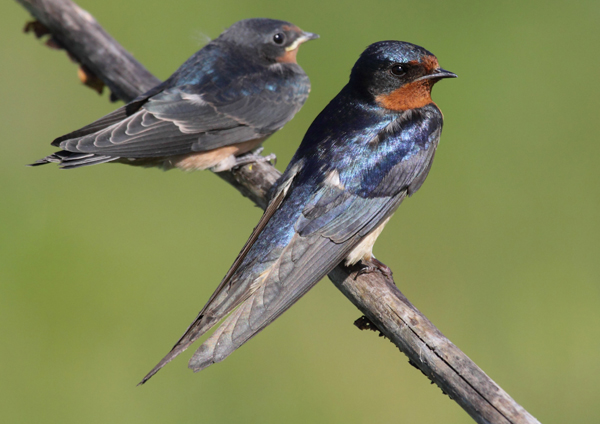Nature Canada enlists citizen scientists in SOS
Administrator | Aug 03, 2018 | Comments 0

– Mark Peck photo
Nature Canada has turned to Prince Edward County naturalists groups and volunteers seeking help for its new Save our Swallows (SOS) program.
The organization, along with partner groups, are launching the multi-year project with support from the Ontario Trillium Foundation.
“It involves working closely with farmers and farming organizations, birding groups and naturalist clubs to stop and reverse the declines of this suffering group of species,” said Ted Cheskey, naturalist director for Nature Canada. “We expect that the data will give us important information about swallow life cycles, populations and habitat use. We hope that volunteers from the Prince Edward Point Bird Observatory and Prince Edward County Field Naturalists will join with us to identify and monitor swallow roosts in Prince Edward County and help us find ways to ensure their protection.”
The program will operate in three areas of Ontario near Lakes Erie and Ontario, and includes Prince Edward County, an important areas for swallows during their breeding season.
The program has three streams of work, one dealing with swallows on the agricultural landscape, a second focused on the Purple Martin, and the third dealing with major post-breeding roost sites.
“After nesting and raising their young, swallows gather in large colonies or roosts containing hundreds to even hundreds of thousands of birds for several weeks before disbanding and starting migration south,” said Cheskey. “Roosts may contain several species of the Swallow family which includes: Purple Martins, Tree Swallows, Cliff Swallows, Barn Swallows, Bank Swallows and Northern Rough-winged Swallows. Other species such as Red-winged Black Birds, Starlings and Grackles may join the colony. ”
He explains that typically, the roosts are easiest to view at sunrise and sunset as the swallows move out of and into their roosting territory. Roosting is considered an important part of the swallow natural life cycle and is a behavior shared by several avian species.
The Nature Canada project initiates participants to identify roosting sites using Doppler radar. Using the NEXRAD images available online from the United States’ National Center for Environmental Information, swallows erupting from their roosting sites at dawn show up as unique shapes on the screen. Having identified a roosting site, volunteers go to the area to monitor the species and numbers of birds in the roost.
Swallows belong to the group of birds collectively known as aerial insectivores – because they feed on insects on the wing. Unfortunately, during the twentieth century, aerial insectivores experienced substantial population declines in North America.
As a result both Barn Swallow and Bank Swallow are considered ‘Threatened’ in Ontario and federally.
“There are many reasons for this, but habitat loss is considered an important consideration,” said Cheskey. “Identifying roosting sites will allow investigators to work toward protecting important habitats that concentrate these at-risk species in great numbers, making them highly vulnerable.”
For more information about participating, contact
Cheryl Anderson at cherylanderson23@sympatico.ca
or Ted Cheskey at tcheskey@naturecanada.ca
Filed Under: News from Everywhere Else
About the Author:































